CFSA Farm Tour – Vollmer Farm
I have never heard of a agricultural theme park, but during the CFSA farm tour I ended up at one. Vollmer Farm is part organic farm, part u-pick strawberry and pumpkin patch and part crazy town. “The Back Forty” as it is called is a farm themed amusement park complete with an Udder Run, a small train with the cars painted like Holstein cows.
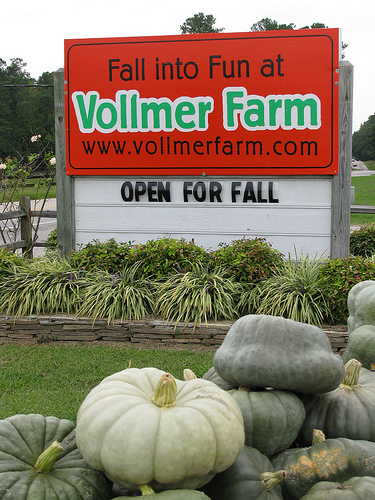
There is also a forty foot underground slide, a Corn Cube filled with dried corn (think of the ball jump) and a pumpkin slingshot. And it was busy.
In a parking lot full of vehicles, ours was the only one there for the farm tour. Farmer John Vollmer was kind enough to personally take us on the tour. I liked John right from the start; he is the type of farmer who can make a friend in sixty seconds, sell you a bushel of pumpkins and keep on going.
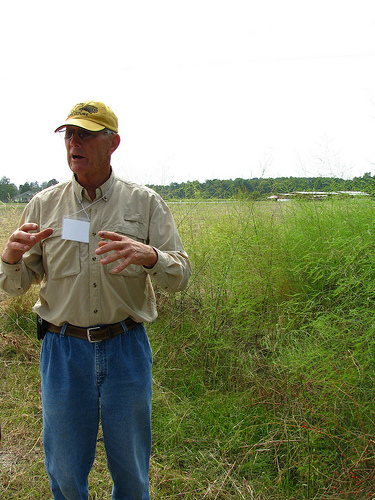
Originally a tobacco farm, the transition to pumpkins brought along the transition to organic and the beginnings of the theme park. While John still raises organic tobacco transplants, there are no other tobacco plants on the land. Vollmer Farm now focuses a lot of energy on u-pick organic strawberries and pumpkins as well as a 150 member second-year CSA. Seven and half acres are currently certified organic with another three in transition. Strawberries and asparagus are the main draws for their CSA membership.
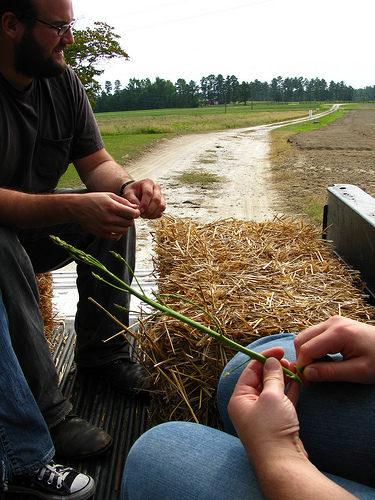
This year Vollmer added eight different varieties of blueberries for a continuous harvest from June through September. Trickle irrigation was installed for the root zone while overhead sprayers serve as frost/freeze protection. By covering the emerging flowers with ice, the developing fruit stays above freezing thus saving the harvest.
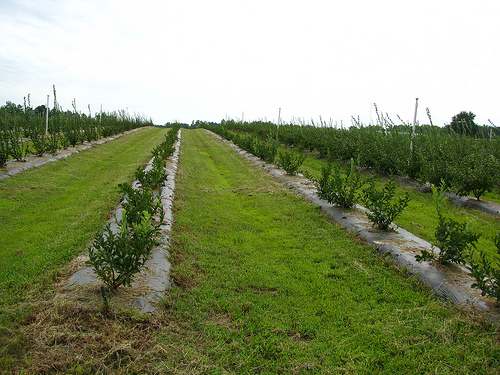
A few years ago, John received a SARE grant to convert his tobacco greenhouse to vegetable production. He now runs a baby lettuce operation, which he bags and sells at his farm stand.
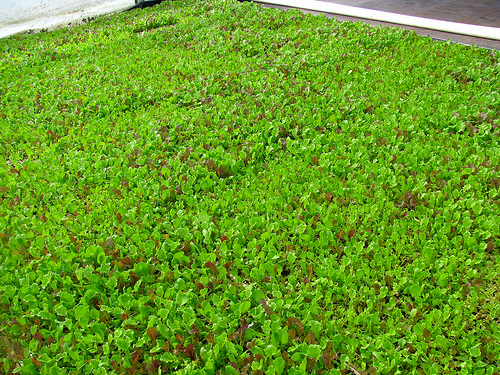
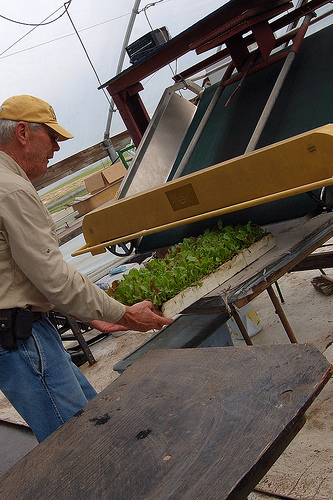
Photo by schlag!
The greenhouse is also home to thousands of strawberry transplants.
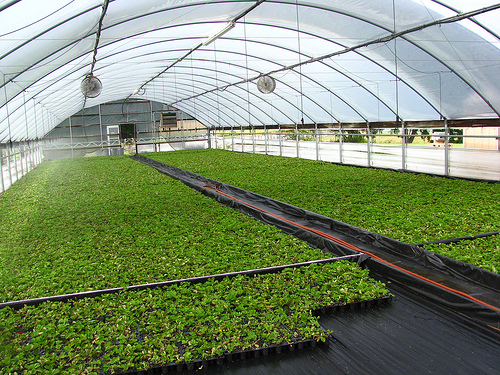
At the farm stand were piles and piles of squashes. Cushaw squash –
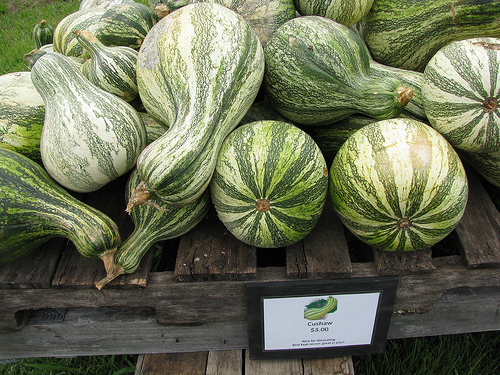
Turban squash –
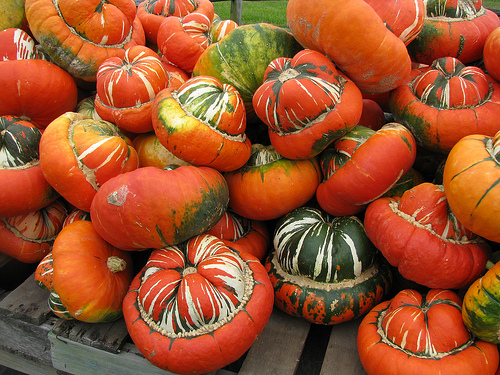
Indian River pumpkin –
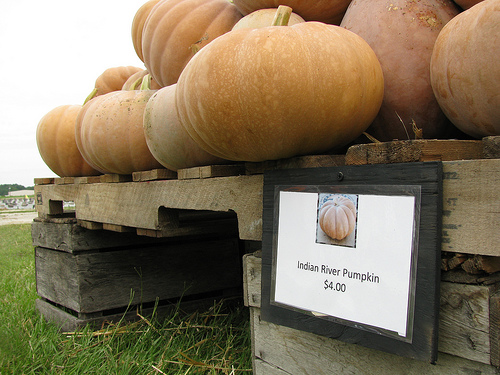
Pie pumpkins –
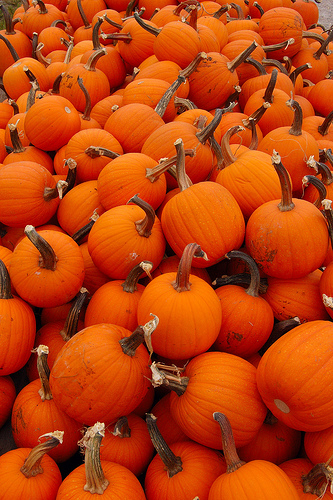
Photo by schlag!
Long neck butternut –
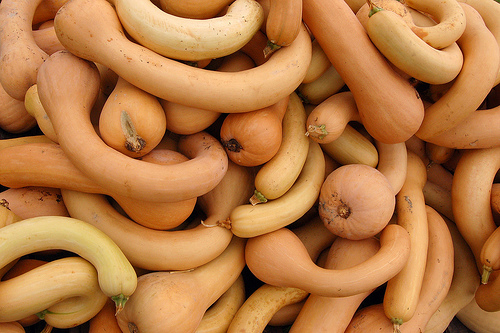
Photo by schlag!
No farm tour would be complete without a dog accompanying the trip.
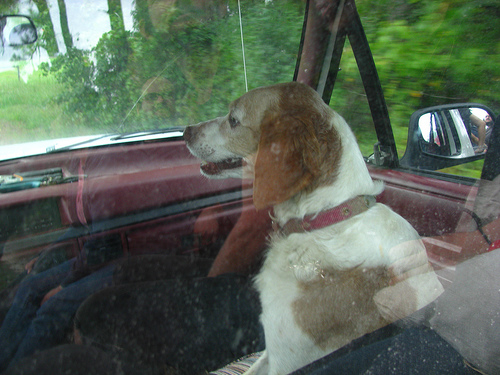
We returned from the tour to a much fuller parking lot, and still no one else coming for the farm tour. Maybe folks came out for the tour but got sucked into the amusement park. Either way, the farm was very busy and seemed very successful.

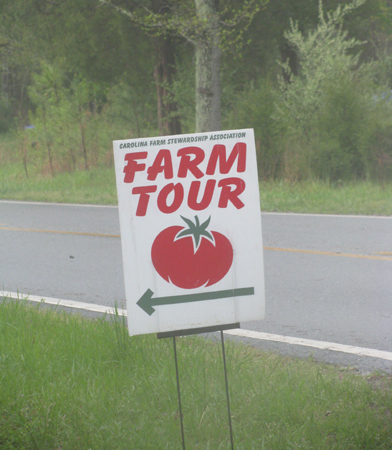

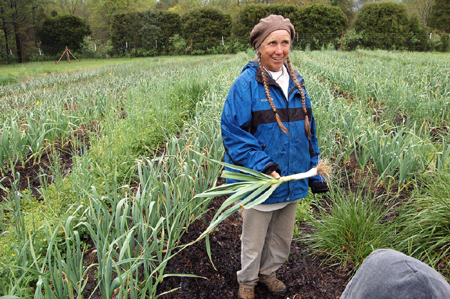
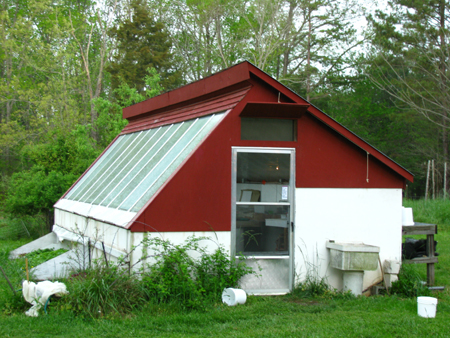
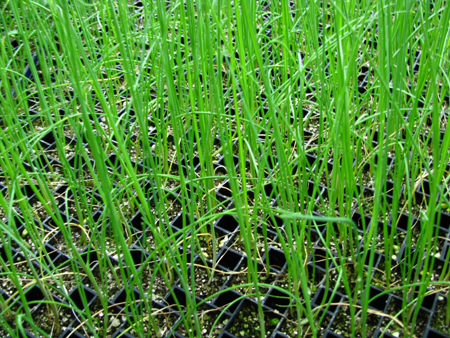
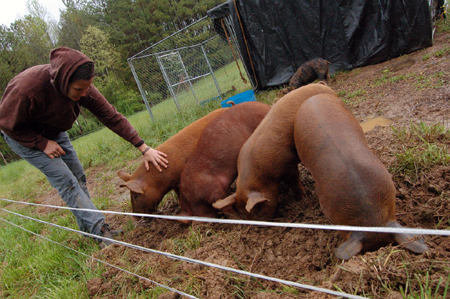
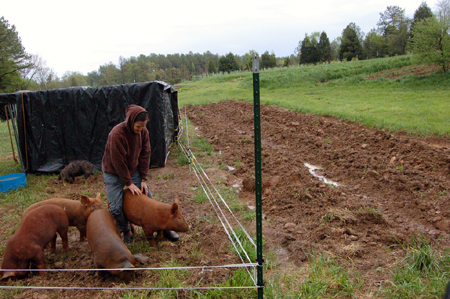
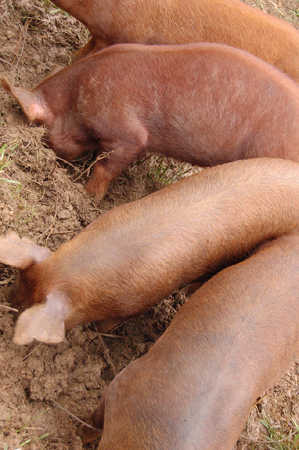
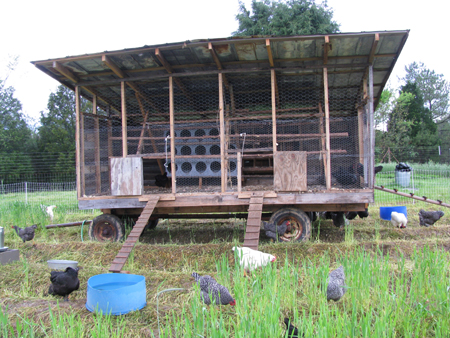
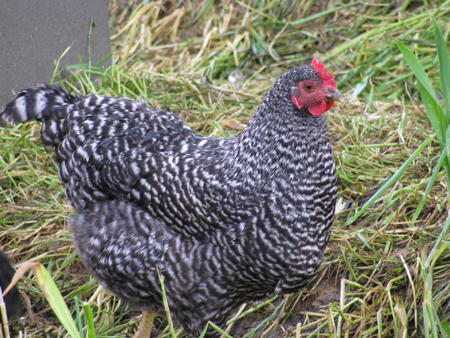
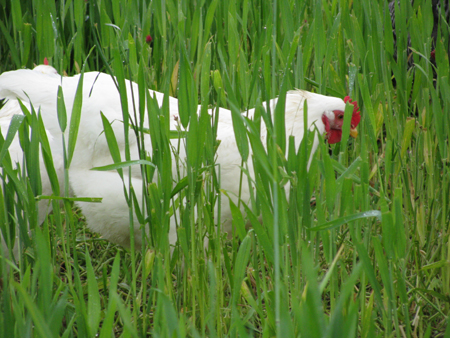
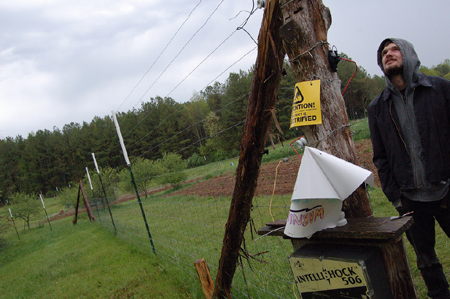
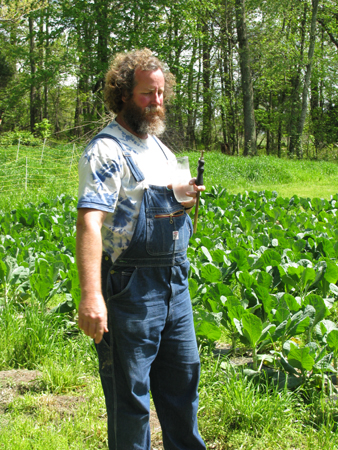

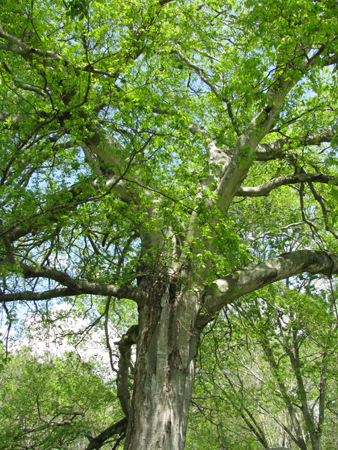
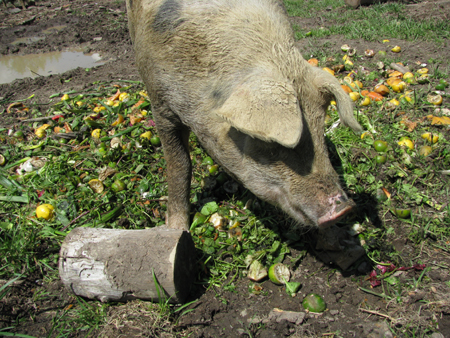
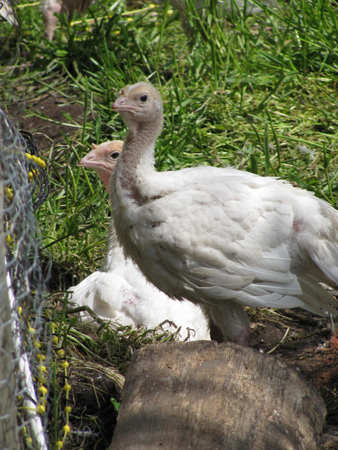
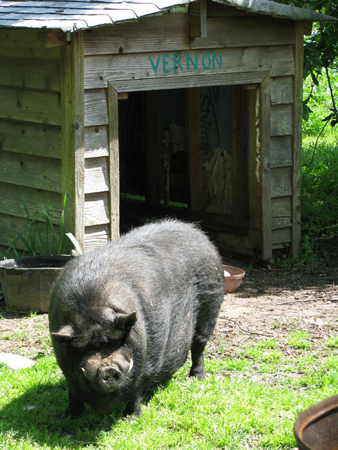
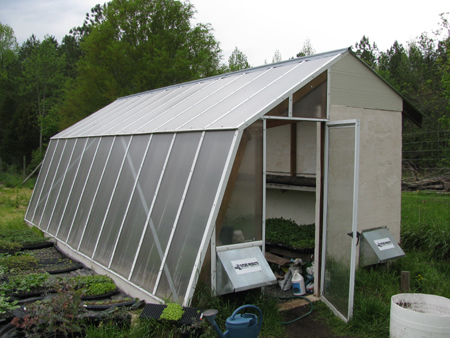
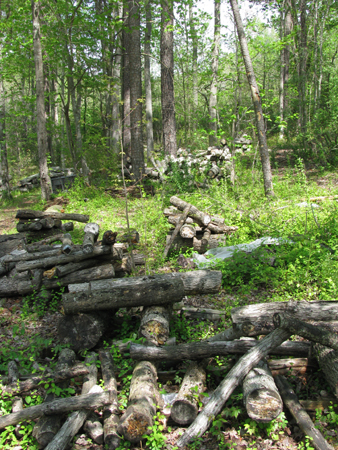
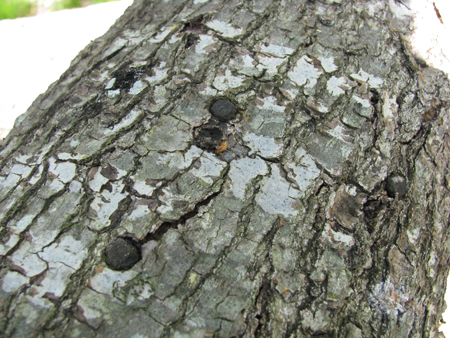
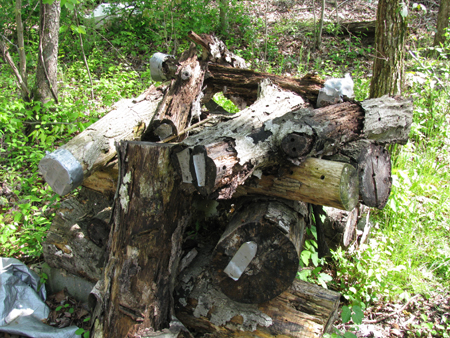
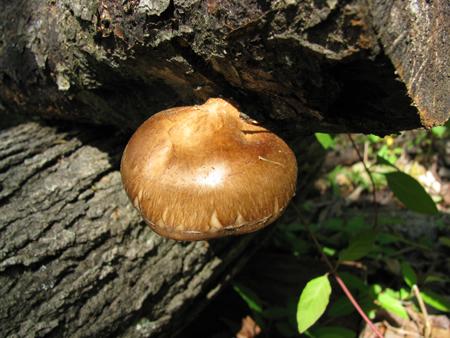
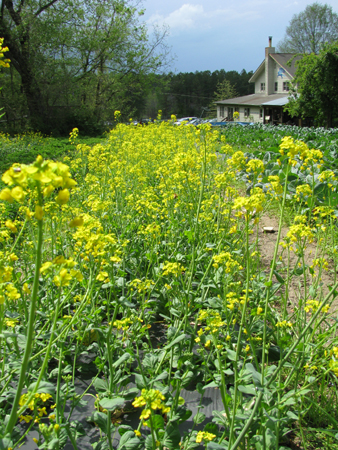
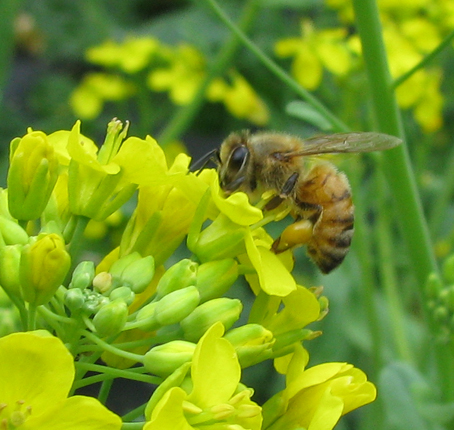
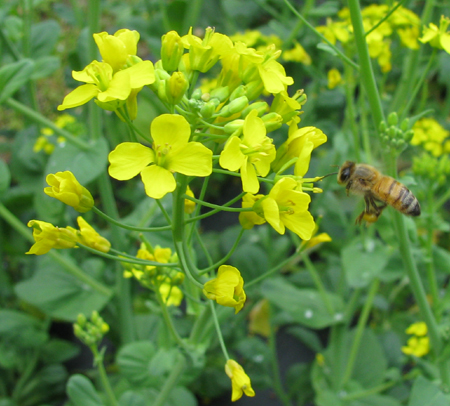
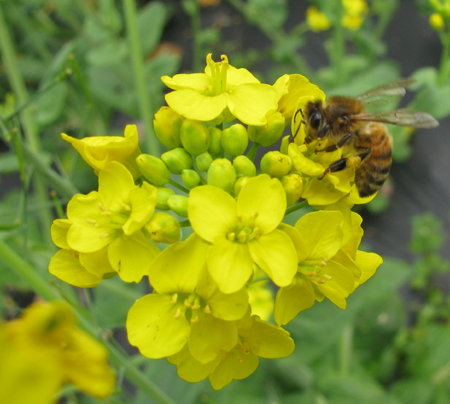
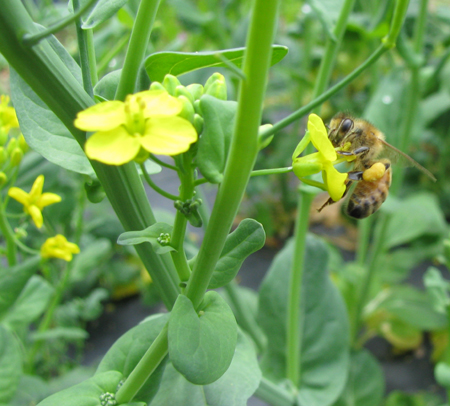
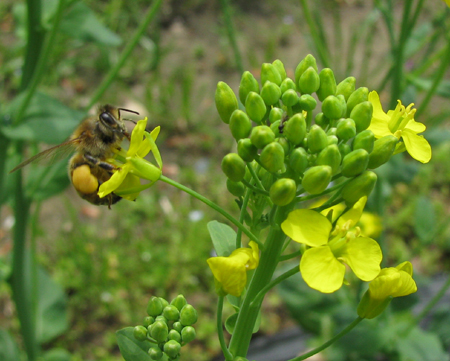

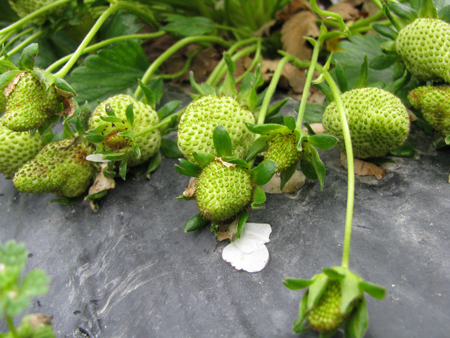
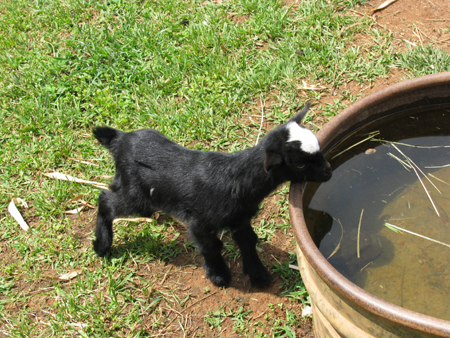

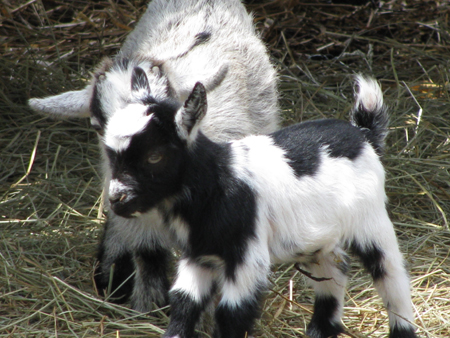
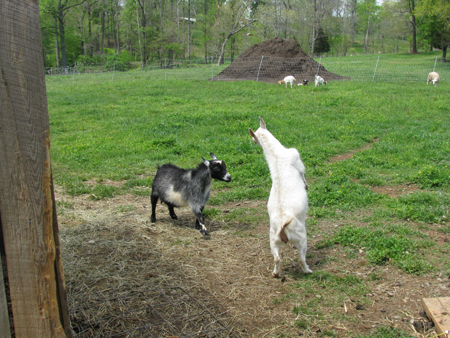
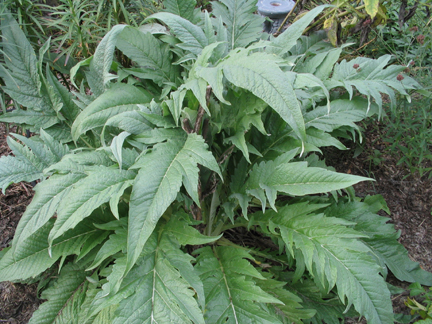

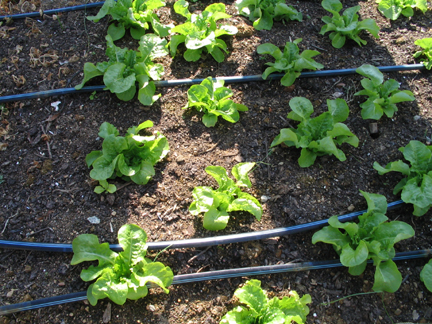

October 7, 2008 at 9:00 am
What no corn maze or tomato street fight? Sounds like an interesting place.
Love the pictures. I’m totally stealing the pumpkin one for my screen saver.